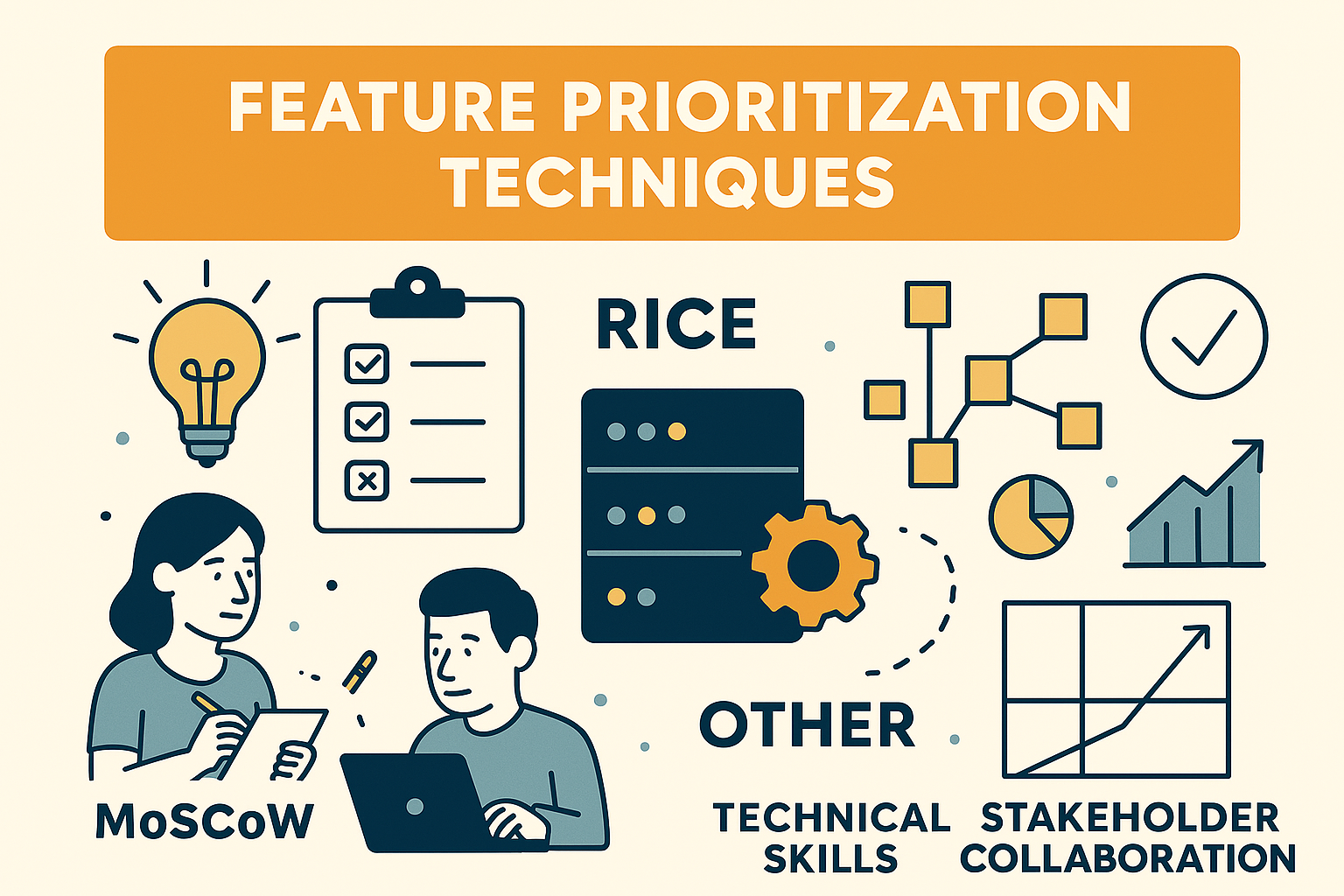Feature prioritization is the art of balancing business value, user needs, and technical feasibility. In fast-paced product environments, making the right trade-offs can be the difference between releasing something impactful and building something that gathers dust.
Why Prioritization Matters
Every product team faces the same challenge: limited resources and infinite ideas. Without a structured way to evaluate and rank feature requests, teams risk wasting effort on low-impact functionality or ignoring what truly matters to users. Prioritization ensures alignment across stakeholders and helps teams deliver value early and often.
Popular Prioritization Frameworks
1. MoSCoW Method
Must-Have: Non-negotiable features that are critical for the product to
Should-Have: Important but not urgent—nice to have if time
Could-Have: Enhancements that are not
Won’t-Have (for now): Agreed to be out of scope for the current
This framework is simple and works well during timeboxed releases like MVPs or sprints.
2. RICE Scoring
Reach: How many users it will
Impact: How much it improves the experience (e.g., 3x = massive impact).
Confidence: Certainty about estimates (e.g., 80%).
Effort: Time required to build, in person-days or RICE = (Reach × Impact × Confidence) / Effort
It’s data-driven and helps remove emotional bias from decision-making.
3. Value vs. Effort Matrix
A visual grid that plots features based on their impact and
Helps identify quick wins (high value, low effort) and time sinks (low value, high effort).
Simple, collaborative, and easy to communicate to non-technical stakeholders.
4. Kano Model
Classifies features into categories like:
Basic Needs: Expected by Missing them causes dissatisfaction.
Performance Needs: The more you offer, the
Delighters: Unexpected features that wow
Great for balancing customer satisfaction with innovation.
5. Weighted Scoring
Assigns numerical weights to criteria like revenue potential, user demand, strategic fit, and technical risk.
Each feature is scored across these dimensions, and total scores guide prioritization.
Ideal for teams that want a quantifiable, customizable framework.
Choosing the Right Method
No single framework is universally best. Your choice depends on team size, product stage, available data, and decision culture.
For MVPs: MoSCoW and Value Effort are excellent.
For Growth Products: RICE and Weighted Scoring offer richer insights.
For User-Centric Products: The Kano Model helps spot differentiators.
Conclusion
Feature prioritization is not a one-time exercise—it’s a continuous conversation between product, design, engineering, and users. By applying structured techniques like MoSCoW, RICE, or Kano, teams avoid decision paralysis and focus on what truly moves the needle. In the end, successful prioritization isn’t just about shipping faster—it’s about shipping smarter.





